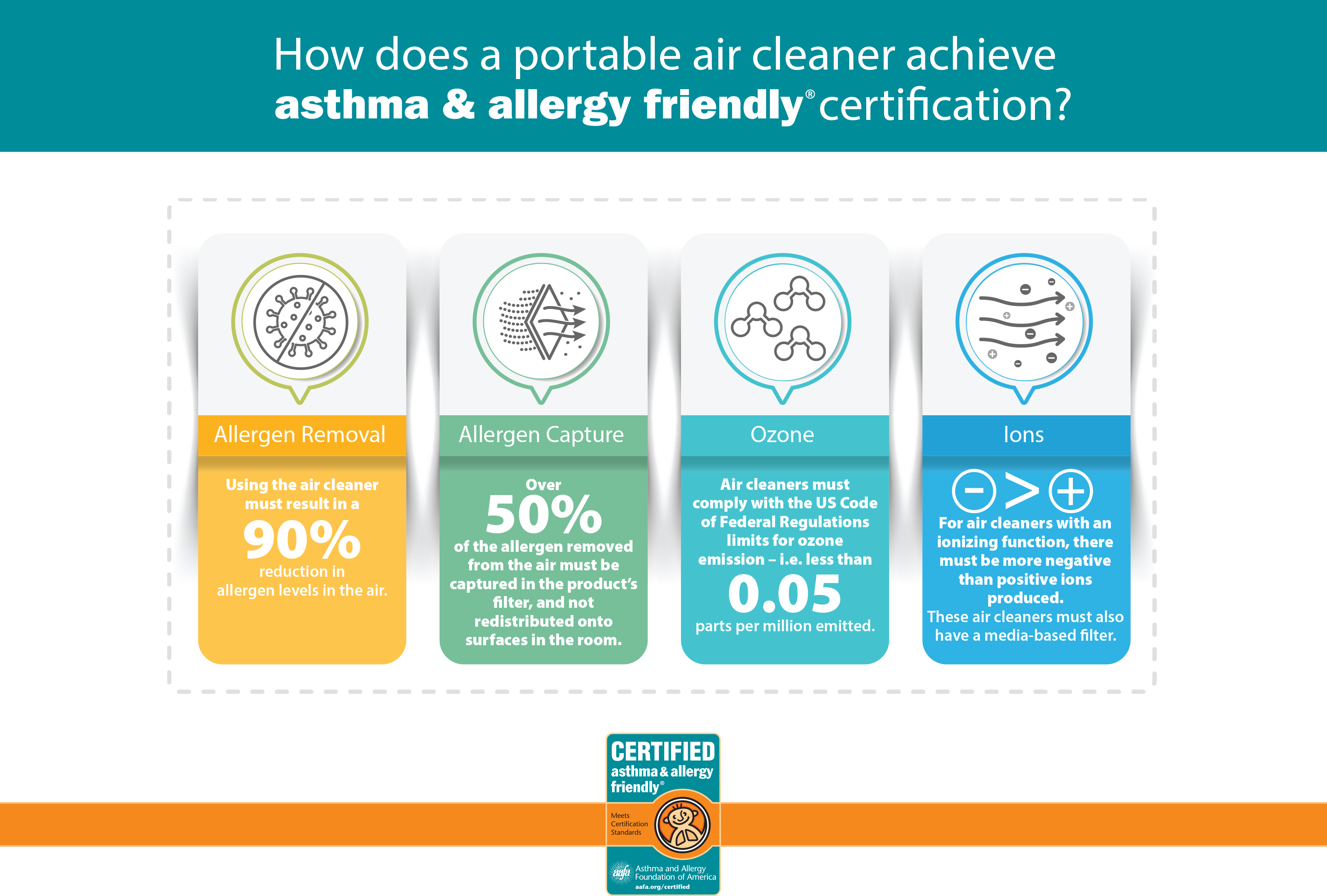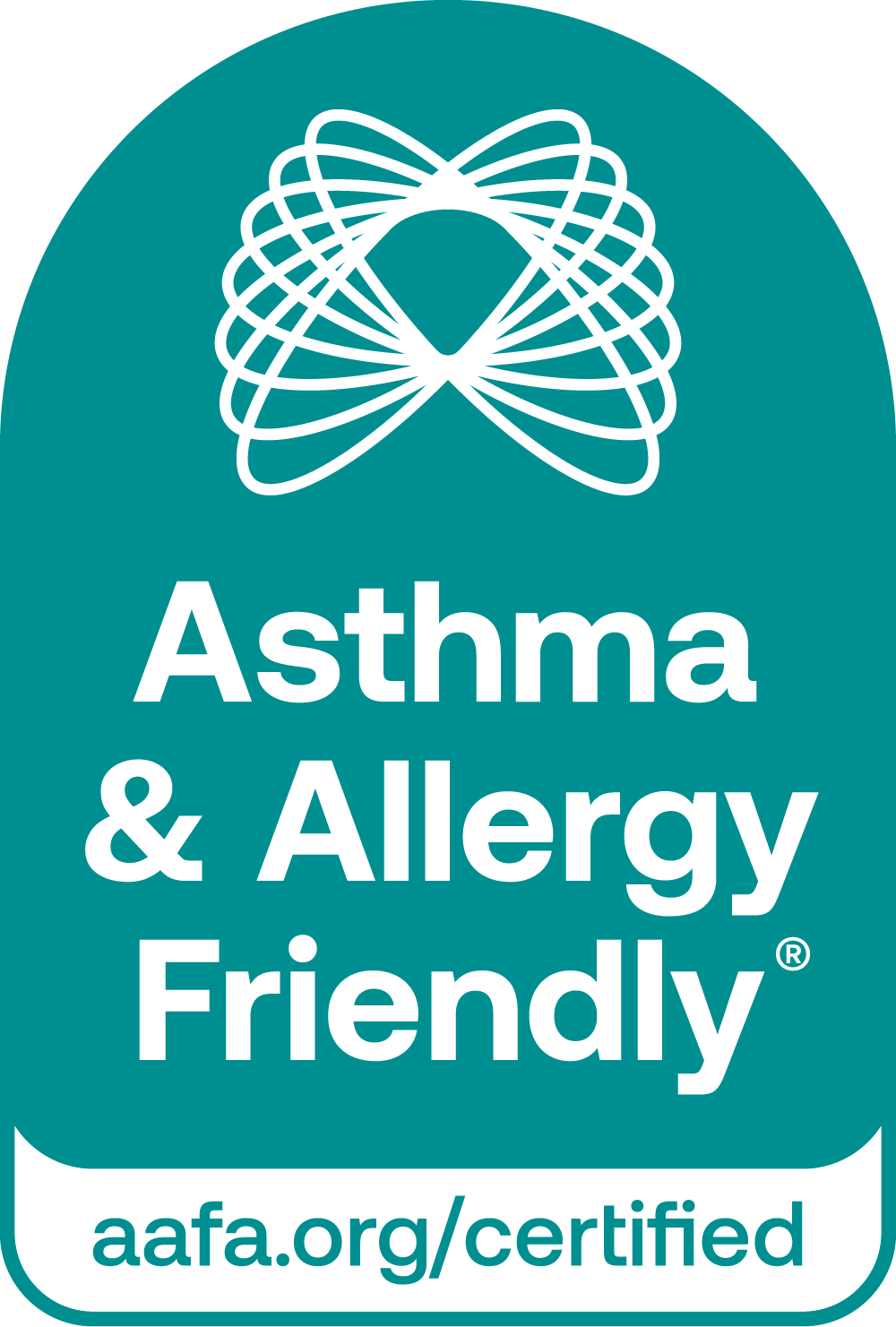Ensuring clean indoor air is one of the most important steps we can take toward maintaining a healthy living space. Surprisingly, the air inside our homes can often be more harmful than the air outside, as it contains a variety of pollutants. Everyday activities like cooking, volatile organic compounds (VOCs) emitted from paint and cleaning products, and even burning fuel (and candles!) release particles and chemicals into the air. Add to that common allergens like pet dander, pollen, mold spores, and dust mite allergen, and it’s clear that indoor air quality can have a serious impact on our health.
One of the most effective tools for achieving cleaner air is a portable air cleaner. These devices can significantly reduce airborne allergens and pollutants, helping create a healthier environment for you and your family.
With more of us spending time indoors, particularly in the approaching colder months, portable air cleaners can be a game changer for those seeking better IAQ, especially for individuals with asthma and allergies. Let’s explore why these devices matter and how to make sure you’re selecting one that truly works for you.
Why Air Quality Matters Now More Than Ever
We know the dangers of poor outdoor air quality—from car exhaust to industrial pollution—but did you know that indoor air can be up to five times more polluted? Dust mite allergen, pollen, pet dander, and mold spores circulate in the air and settle on surfaces, only to be stirred up again when you walk across the room or sit on the couch. If you or a family member has asthma or allergies, these particles can trigger symptoms, making it hard to find relief indoors.
That’s where portable air cleaners come in. Designed to filter out these irritants, portable air cleaners can help create a healthier living environment. But not all devices are created equal, and understanding what makes a good air cleaner is key to making an informed purchase.
What Makes an Effective Portable Air Cleaner?
While many air cleaners promise to improve indoor air, how many manufacturers can back those claims with solid scientific evidence. The Asthma & Allergy Friendly® Certification Program was developed to give consumers confidence by rigorously testing products in real-world conditions. A portable air cleaner must meet strict performance standards before earning this certification, ensuring that it not only removes allergens but also prevents them from re-entering the air you breathe.
Here’s what goes into CERTIFYING a portable air cleaner:
1. Removing Allergens from the Air
To earn the Asthma & Allergy Friendly® Certification, air cleaners must reduce airborne allergen levels by at least 90%. Testing simulates real-life scenarios in a controlled chamber, complete with carpet, furniture, and allergen-laden dust. The air cleaner must prove its ability to capture allergens of different sizes like dust mite allergen, pollen, and cat allergen particles.
2. Capturing the Allergen, Not Just Moving It
It’s not enough to just filter the air. Certified air cleaners must also demonstrate that they capture the allergens in their filter rather than just moving them to another surface where they could be stirred up again. At least 50% of the allergens removed from the air must be captured within the air cleaner’s filter.
3. Keeping You Safe from Ozone
Some air cleaners generate ozone, a gas that can irritate the lungs and worsen respiratory issues, particularly in people with asthma. The Asthma & Allergy Friendly® Certification ensures that any ozone produced by the air cleaner is kept at extremely low levels (less than 0.05ppm), making it safe for indoor use.

Types of Filtration to Consider
There are several types of filtration technology used in portable air cleaners, and knowing the difference can help you make a more informed choice.
- HEPA Filters: Simply put, this is a fine mesh folded a bit like an accordion, that traps particles as air is pushed through it by a fan. It can trap 99.97% of particles 0.3microns or larger. These filters trap common allergens like dust, pollen, and pet dander.
- Activated Carbon Filters: These filters are great for tackling gases and odors, like those from household cleaning products or paint. While they may not capture allergens, combining a HEPA filter with an activated carbon filter can tackle both particulate matter and odors.
- Electrostatic Filters: These filters charge particles as they pass through, causing them to stick to metal plates. While effective at trapping particles, it’s important to ensure they don’t generate harmful ozone.
- UV light: UV light is capable of killing micro-organisms, and UV light sources can sometimes be present in room air cleaners, and also in HVAC systems. UV light requires time to kill micro-organisms, it doesn’t happen immediately. As such, where a UV system is in place, you should make sure that it actually is effective, rather than just being a sales pitch!
- Ionizers and Ozone generators: Air cleaners that emit harmful quantities of ozone during air purification are not recommended, as inhaling ozone can cause harmful health effects. While ionizers are sometimes linked to health concerns due to the potential impact of positive ions, research supports the safety of air cleaners that produce predominantly negative ions.
Making the Right Choice for Your Home
When selecting a portable air cleaner, it’s essential to consider the size of the room in which it will be used. The Clean Air Delivery Rate (CADR) can help you determine if the device is powerful enough for the space. Air purifiers with higher CADR ratings will be able to clean the air within a space more quickly than models with a lower CADR rating. So remember, If you purchase an air cleaner with a CADR rating too low for your room, you will find it ineffective.
While CADR is a useful tool to assist in selecting an appropriate air cleaner, you should also consider the environment in which it is to operate. Your indoor air is very much a function of your outdoor air and so, if you live in an area with high environmental particulate load, this will transfer to your indoor environment. This will impact how often you need to change your filter, and how long you need to leave your air cleaner on. In times, or in areas, of high load, for example in areas impacted by wildfires, filters would need to be changed more regularly and air intake should be set to re-circulate rather than using fresh air intake.
But beyond technical specifications, look for third-party certifications like the Asthma & Allergy Friendly® mark to ensure the air cleaner has been independently tested and proven effective in real-world conditions. This is your assurance that the device you choose will contribute to better indoor air quality, not just provide empty promises.
Final Thoughts
With October marking Indoor Air Quality Awareness Month, now is the perfect time to take steps toward improving the air in your home. Portable air cleaners are an excellent addition to your overall strategy for better IAQ. By investing in a high-quality, validated air cleaner, you’re not only improving the air you breathe but also taking a proactive step toward safeguarding your long-term health and well-being.
